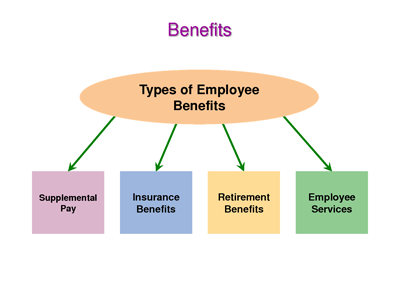Axolotls, often called “Mexican walking fish,” are fascinating creatures with unique care requirements. One of the most critical aspects of keeping an axolotl healthy and happy is ensuring it has a proper diet. Understanding what do axolotls eat? — both in the wild and in captivity — can make a huge difference in their growth, behavior, and overall well-being.
In this guide, we’ll cover everything you need to know about an axolotl’s diet, including the best food options, feeding frequency, and common mistakes to avoid.
Natural Diet of Axolotls in the Wild
In their natural habitat — the lake systems of Xochimilco and Chalco in Mexico — axolotls are carnivorous predators. Their wild diet mainly consists of small aquatic creatures. Some of the common foods axolotls consume in the wild include:
- Worms (earthworms, aquatic worms)
- Small fish
- Insects and insect larvae
- Crustaceans like tiny shrimp
- Mollusks
Wild axolotls hunt using a method called suction feeding. They rapidly open their mouths, creating a vacuum that pulls their prey inside. This natural hunting instinct influences how they should be fed in captivity too.
Best Foods for Axolotls in Captivity
Feeding an axolotl in captivity isn’t complicated, but it does require offering the right types of food to mimic their natural diet as closely as possible. Here’s a breakdown of some of the best food choices:
1. Earthworms
Earthworms are considered the gold standard for axolotl diets. They are rich in protein, easy to digest, and highly nutritious. Nightcrawlers (Lumbricus terrestris) are particularly recommended because they are the right size and packed with nutrients.
Tip: Make sure the worms come from a safe source, free from pesticides or harmful chemicals.
2. Bloodworms
Bloodworms (the larvae of midge flies) are another popular option, especially for younger axolotls. They are available frozen, live, or freeze-dried. While nutritious, bloodworms are best used as a supplement rather than a staple because they are not as rich in nutrients as earthworms.
3. Pellets
Specialized sinking pellets designed for carnivorous aquatic animals are a convenient feeding option. Look for high-quality axolotl pellets with minimal fillers. Pellets ensure a balanced diet and can be used alongside live foods for variety.
4. Brine Shrimp
Brine shrimp are suitable for juvenile axolotls and can encourage natural hunting behaviors. However, like bloodworms, they should not be the only food source.
5. Small Pieces of Fish
Occasionally, you can offer small, freshwater fish such as guppies. Ensure the fish are healthy and parasite-free. Avoid goldfish, as they often carry diseases and are high in fat.
6. Other Treats
Once in a while, axolotls can enjoy treats like:
- Daphnia (small planktonic crustaceans)
- Tubifex worms (ensure they are clean and free of pathogens)
- Blackworms
Treats should be fed in moderation to avoid digestive issues.
Foods to Avoid Feeding Axolotls
Not everything that fits into an axolotl’s mouth is safe for consumption. Some foods can cause health problems or even be fatal. Here are foods you should never feed your axolotl:
- Beef, chicken, or other red meats (difficult to digest and fatty)
- Processed foods (human foods are unsuitable)
- Large fish (risk of injury and introducing parasites)
- Insects from your backyard (may have pesticides or parasites)
- Dog or cat food (not nutritionally appropriate)
Always stick to foods specifically safe for aquatic predators.
How Often Should You Feed an Axolotl?
Feeding frequency varies based on the age and size of the axolotl:
- Juvenile axolotls (under 6 months old): Once a day.
- Sub-adults (6–12 months): Every other day.
- Adults (over a year old): Two to three times a week.
Axolotls are opportunistic feeders but prone to obesity if overfed. A good rule of thumb is to offer food until the axolotl shows no further interest, then remove any uneaten food within 30 minutes to maintain tank cleanliness.
How to Feed an Axolotl
Feeding axolotls is relatively straightforward:
- Use tongs: Long feeding tongs help place food directly in front of them.
- Hand-feed: Some axolotls can be trained to take food from your hand.
- Drop and scoop: Drop food near the axolotl and allow it to find and eat it naturally.
Axolotls are nocturnal, so feeding them during the evening hours often yields better results.
Special Considerations for Baby Axolotls
Baby axolotls (larvae) require more frequent feeding and smaller food items. Suitable foods include:
- Newly hatched brine shrimp
- Microworms
- Daphnia
Baby axolotls need to be fed two to three times a day to support rapid growth. As they grow larger, their diet can gradually transition to bloodworms and small earthworms.
Final Thoughts
Feeding your axolotl the right diet is essential for their health and longevity. Whether you stick to earthworms, supplement with quality pellets, or offer occasional treats like brine shrimp, variety is key to meeting their nutritional needs. Always remember to feed the correct portion size, avoid harmful foods, and maintain a clean feeding environment.
By understanding what axolotls eat and how their natural instincts work, you’ll be better prepared to provide them with a happy, healthy life in your care.



